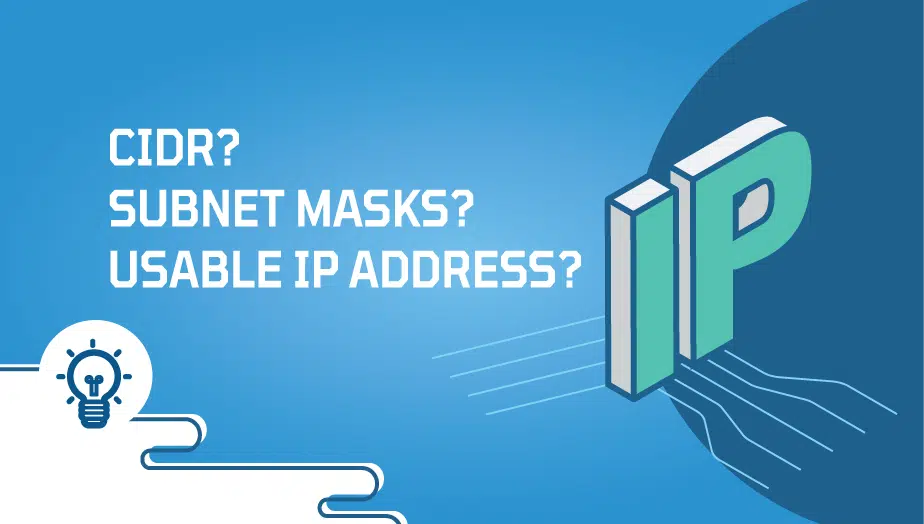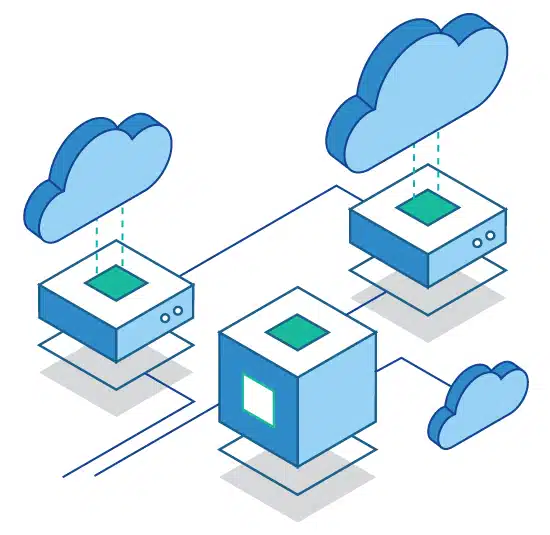In computer networking, IP addresses are essential for identifying and communicating with devices on a network. However, as the number of devices on a network increases, managing IP addresses and ensuring each device has a unique identifier becomes more challenging. CIDR (Classless Inter-Domain Routing) and subnet masks come in here.
In this article, we will discuss what CIDR and subnet masks are, why they are used, their installation processes, features, advantages, disadvantages, and more.
What is CIDR?
CIDR is a method of allocating and routing IP addresses that allow more efficient use of available IP address space. Before the introduction of CIDR, IP addresses were assigned based on fixed-length network prefixes, which led to a significant waste of IP address space.
CIDR allows networks to be divided into smaller subnets, each of which can have its unique identifier. This allows for more productive use of IP address space, as multiple subnets can be created from a single IP address block.
CIDR notation is used to express the size of a network prefix.
For example, a network with a prefix of 24 bits would be described as /24. CIDR notation is used to specify the number of bits in the network prefix, which determines the size of the network and the figure of IP addresses available for use.
What is a Subnet Mask?
A subnet mask is a 32-bit figure that divides an IP address into two parts: the network address and the host address. The network address identifies the network to which the device belongs, while the host address identifies the specific device on that network.
Subnet masks are used in conjunction with CIDR notation to define the size of a network and the number of devices that can be connected to it. For example, a subnet mask of 255.255.255.0 (/24) would allow up to 256 devices to be connected to a network.
In this tutorial, we will give a quick reference about cidr, subnet masks, and usable IP addresses.
A subnet mask is a number that defines a range of IP addresses that can be used in a network, please find the table which shows the
CIDR, Subnet Mask, and Usable IPs.
Take a look at the table below,
| CIDR | SUBNET MASK | TOTAL IPs | USABLE IPs |
| /32 | 255.255.255.255 | 1 | 1 |
| /31 | 255.255.255.254 | 2 | 0 |
| /30 | 255.255.255.252 | 4 | 2 |
| /29 | 255.255.255.248 | 8 | 6 |
| /28 | 255.255.255.240 | 16 | 14 |
| /27 | 255.255.255.224 | 32 | 30 |
| /26 | 255.255.255.192 | 64 | 62 |
| /25 | 255.255.255.128 | 128 | 126 |
| /24 | 255.255.255.0 | 256 | 254 |
| /23 | 255.255.254.0 | 512 | 510 |
| /22 | 255.255.252.0 | 1024 | 1022 |
| /21 | 255.255.248.0 | 2048 | 2046 |
| /20 | 255.255.240.0 | 4096 | 4094 |
| /19 | 255.255.224.0 | 8192 | 8190 |
| /18 | 255.255.192.0 | 16384 | 16382 |
| /17 | 255.255.128.0 | 32768 | 32766 |
| /16 | 255.255.0.0 | 65536 | 65534 |
| /15 | 255.254.0.0 | 131072 | 131070 |
| /14 | 255.252.0.0 | 262144 | 262142 |
| /13 | 255.248.0.0 | 524288 | 524286 |
| /12 | 255.240.0.0 | 1048576 | 1048574 |
| /11 | 255.224.0.0 | 2097152 | 2097150 |
| /10 | 255.192.0.0 | 4194304 | 4194302 |
| /9 | 255.128.0.0 | 8388608 | 8388606 |
| /8 | 255.0.0.0 | 16777216 | 16777214 |
| /7 | 254.0.0.0 | 33554432 | 33554430 |
| /6 | 252.0.0.0 | 67108864 | 67108862 |
| /5 | 248.0.0.0 | 134217728 | 134217726 |
| /4 | 240.0.0.0 | 268435456 | 268435454 |
| /3 | 224.0.0.0 | 536870912 | 536870910 |
| /2 | 192.0.0.0 | 1073741824 | 1073741822 |
| /1 | 128.0.0.0 | 2147483648 | 2147483646 |
| /0 | 0.0.0.0 | 4294967296 | 4294967294 |
Why Use CIDR and Subnet Masks?
CIDR and subnet masks are used to manage network IP addresses and ensure each device has a unique identifier. They allow more efficient use of available IP address space, as multiple subnets can be created from a single IP address block.
CIDR and subnet masks also allow network administrators to control network traffic by dividing a network into smaller subnets. This can help to reduce network congestion and improve network performance.
Features of CIDR and Subnet Masks
CIDR and subnet masks have several key features that make them essential components of networking. These include:
- Efficient use of IP address space: CIDR allows for more efficient use of available IP address space by dividing networks into smaller subnets.
- Network traffic control: Subnetting allows network administrators to control traffic by dividing a network into smaller subnets.
- Scalability: CIDR allows for the efficient allocation and routing of IP addresses, making it possible to scale a network to accommodate many devices.
- Flexibility: CIDR allows for creating subnets of varying sizes, which can be tailored to meet the specific needs of a network.
Advantages of CIDR and Subnet Masks
CIDR and subnet masks offer several advantages for network administrators. These include:
- Efficient use of IP address space: By dividing networks into smaller subnets, CIDR allows for more efficient use of available IP address space.
- Improved network performance: Subnetting allows network administrators to control traffic, reducing congestion and improving network performance.
- Scalability: CIDR allows for the efficient allocation and routing of IP addresses, making it possible to scale a network to accommodate many devices.
- Improved network performance: By dividing an extensive network into smaller subnets, CIDR and subnetting can improve network performance by reducing the amount of broadcast traffic and making it easier to manage network traffic.
- Flexibility: CIDR allows more flexibility in assigning IP addresses to devices, as administrators can allocate addresses in smaller or larger blocks depending on their needs.
- Better scalability: Subnetting enables administrators to easily add new devices to the network and manage IP address allocation more efficiently.
- Cost savings: CIDR can lead to cost savings by reducing the number of IP addresses required to support a network, which can be particularly beneficial for organizations with limited address space.
Overall, CIDR and subnet masks offer a range of benefits that can help network administrators manage IP address allocation and improve network performance and scalability.
Disadvantages of CIDR and Subnet Masks
While CIDR and subnet masks offer many benefits, there are also some disadvantages to consider. These include:
- Complexity: CIDR and subnetting can be complex to configure and manage, especially for networks with many devices.
- Security risks: Subnetting can create security risks if not configured properly, as devices on different subnets may be able to cohere with each other.
- Increased management overhead: CIDR and subnetting require additional management overhead, including configuring routers and managing network devices.
- Address space limitations: While CIDR allows for more efficient use of IP address space, there is still a finite number of available IP addresses.
- Complexity: CIDR and subnetting can be complex to configure and manage, especially for networks with many devices.
- Security risks: Subnetting can create security risks if not configured properly, as devices on different subnets may be able to cohere with each other.
- Increased management overhead: CIDR and subnetting require additional management overhead, including configuring routers and managing network devices.
- Address space limitations: While CIDR allows for more efficient use of IP address space, there is still a finite number of available IP addresses.
- Difficulty in reconfiguration: Once a network has been configured with CIDR and subnet masks, it can be challenging to reconfigure without disrupting network operations.
- Lack of standardization: Different organizations may use different CIDR and subnetting practices, making integrating various networks challenging or troubleshooting network issues.
Despite these challenges, CIDR and subnetting remain essential tools for network administrators, allowing them to effectively manage IP address allocation and ensure that each device on a network has a unique identifier.
Conclusion
CIDR and subnet masks are essential networking components, allowing for efficiently allocating and managing IP addresses on a network. They offer many benefits, including improved network performance, scalability, and flexibility.
However, there are also some downside to consider, such as the complexity of configuration and management, potential security risks, and increased management overhead.
Despite these challenges, CIDR and subnetting remain essential tools for network administrators, allowing them to effectively manage IP address allocation and ensure that each device on a network has a unique identifier.
As networks continue to grow and evolve, CIDR and subnetting will likely play a critical role in managing IP address space and ensuring network performance and security.
Our goal in writing this article is to give you anquick reference about cidr, subnet masks and usable ip address and we hope this article has given you a better understanding.
Get the most out of learning with VPSie.com
How to Install VestaCP on CentOS, Debian, and Ubuntu in 3 easy steps
A subnet mask is a 32-bit value used to divide an IP address into a network address and a host address. It determines which part of an IP address is the network portion and which part is the host portion.
CIDR stands for Classless Inter-Domain Routing, a technique used to allocate IP addresses more efficiently by allowing for variable-length subnet masks.
Subnetting is important because it allows for more efficient use of IP address space, reduces network traffic, and improves network performance and security.
Subnet masks are typically represented in dotted decimal notation, such as 255.255.255.0. To calculate a subnet mask, you need to determine the number of bits used for the network portion of the IP address.
CIDR is a technique for allocating IP addresses more efficiently by allowing for variable-length subnet masks. Subnetting is a technique for dividing a network into smaller subnets, each with its own unique network address and host addresses.
The benefits of CIDR and subnet masks include improved network performance, scalability, flexibility, and cost savings.























